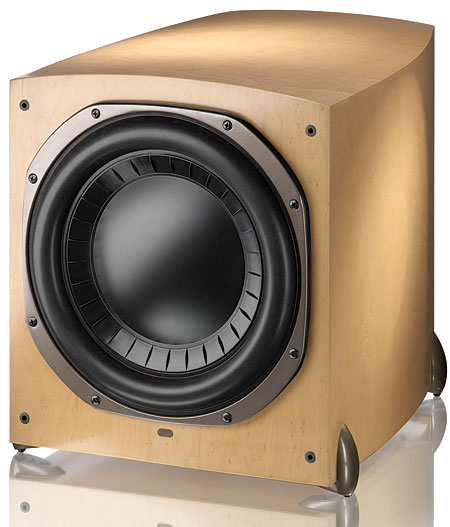Paradigm Reference Signature Speaker System Real-World Performance
Loudspeakers are like actors. Some actors—and speakers--have a strong, distinctive personality that is evident in every role they play. Others submerge their own personality in the role, so that the audience experiences the character, not the actor playing the character. The Paradigm Reference Signature system is like the latter type of actor—call it the Daniel Day-Lewis of speakers.
I thought of this parallel between actors and speakers after I'd been listening to the Reference Signature system for some time, and I was having difficulty coming up with descriptive terms to characterize the sound of the speakers. Bright, dark, forward, laid-back, cool, warm, soft, hard—none of these common audiophile terms seemed to apply consistently to the sound made by the speakers. They seemed nearly characterless, almost without discernable coloration. What I heard instead was a closer approach to the original sound represented on DVD soundtracks and music CDs.

The Reference Signature system sounded fine in two-channel stereo (using just the S8s), but it really came into its own with DVDs in multichannel mode. One of my favorite movies is Groundhog Day. Directed by Harold Ramis and starring Bill Murray and Andie MacDowell, this is the story of a TV reporter (Murray) who keeps re-living the same day (the Groundhog Day of the title) in Punxsutawney, PA. It's classified as a comedy, but I think it's also a serious movie, with important things to say about the choices we make in life.
I've seen it a number of times, and I thought I was thoroughly familiar with every detail of the soundtrack, like the singing of the crowd in the town square. My usual system—based on five Dunlavy SC-I speakers and a Velodyne DD-12 subwoofer—has a sound that I've always considered to be excellent. But played through the Paradigm Reference Signature system, the voices in the town-square scene sounded more natural, and I could hear fine details of the soundtrack mix that had previously been obscured. Very impressive indeed.
For those of you who must have a description of the Reference Signature system's sound using audiophile terminology, I can say it was smooth, with highs that were both sweet and detailed (a rare combination, due in no small measure to the pure-beryllium dome tweeter). The system was dynamic when needed, with a good sense of depth on the right recordings.
It was decidedly not clinical or hard-sounding—in fact, it revealed the sound of my Dunlavy system to be veering slightly in that direction. There was a degree of midbass warmth, but that sort of thing is very much room-dependent and likely attributable to the fact that, in my room, the front speakers were closer to the corners than ideal.
The blend between the front and center speakers was seamless, and voices in all three sounded the same—a tribute to Paradigm's timbre matching of the S8 and C5. As I expected, having read Fred Manteghian's review of the Reference Signature subwoofer, the low bass was stupendous: deep, tight, and, when the occasion called for it, loud enough to shake the walls. Although the S8s go pretty low on their own, I would definitely recommend including the Reference Signature subwoofer for home-theater use.
If there is any part of the Reference Signature system that I'm ambivalent about, it's the ADP3 surround speakers. Tom Holman, co-founder of THX, has argued that the diffuse soundfield produced by dipole speakers is more appropriate for surround-sound applications than the direct sound from conventional monopole speakers, and he has some listener-preference studies to back up his claim.
Still, the approach remains controversial. Some highly regarded speaker manufacturers have scrupulously avoided producing dipole speakers, and others have offered speakers with a switchable monopole/dipole (and sometimes bipole) configuration. My colleague Kal Robinson, whose "Music in the Round" column for Stereophile deals with multichannel music, has chosen monopole surround speakers for his own systems.
The ADP3s have very similar tonal characteristics as the front and center-channel speakers, which Holman considers to be essential for dipoles in a home-theater system, so these speakers represent an excellent implementation of this principle. And, as claimed, the surround effects had the desirable sense of "envelopment" with movie soundtracks—the speakers were seldom evident as sources of sound. However, with multichannel music recordings (DVD-Audio or SACD), I preferred the more precisely defined surround soundstage of my direct-radiating Dunlavy SC-I system. (In my normal setup, the SC-Is are mounted near the ceiling on the side wall somewhat behind the listening area at a distance of about six feet from the listening area.)
To a large extent, the choice between dipole and monopole surround speakers remains a matter of personal preference. If you listen to a lot of discrete multichannel music recordings, I suggest using a pair of monopole speakers in the Reference Signature line—ideally, another pair of S8s, but a pair of S4s would be a good compromise.
- Log in or register to post comments




































































